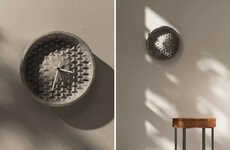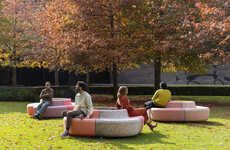
Arup's 3D-Printed Outdoor Sundial Morphs with New Solar Data
Laura McQuarrie — May 17, 2016 — Eco
Outdoor sundials are an ancient method of telling time, but global engineering firm Arup has found a way to make the technology feel fresh again with 3D printing.
Arup's 'Sundial by Prescription' takes inspiration from a design created in collaboration with the urban and architectural designers from Prescription. The design was created specifically for Amsterdam and unlike a traditional sundial that only has one upright element, this concept boasts a fan-like form that resembles a blossoming flower.
While small-scale sundials are suited to tracking the hourly positions of the sun, with incoming data from the sun, this dynamic structure from Arup and Prescription is able to take on new shapes based on the sun's position during a certain part of the year.
Arup's 'Sundial by Prescription' takes inspiration from a design created in collaboration with the urban and architectural designers from Prescription. The design was created specifically for Amsterdam and unlike a traditional sundial that only has one upright element, this concept boasts a fan-like form that resembles a blossoming flower.
While small-scale sundials are suited to tracking the hourly positions of the sun, with incoming data from the sun, this dynamic structure from Arup and Prescription is able to take on new shapes based on the sun's position during a certain part of the year.
Trend Themes
1. 3d-printed Sundials - The use of 3D printing technology is revitalizing the traditional concept of outdoor sundials.
2. Dynamic Structural Design - Designs that can adapt and change based on external factors, such as the position of the sun, are becoming more popular in architecture and engineering.
3. Data-driven Timekeeping - The integration of real-time data allows for more accurate and interactive timekeeping methods, as demonstrated by the Arup and Prescription collaboration.
Industry Implications
1. Architecture - Architects can explore the use of 3D printing and dynamic designs to create innovative structures that respond to environmental changes.
2. Engineering - Engineers can leverage data-driven technologies to develop adaptive solutions for various industries, such as energy efficiency or transportation.
3. Urban Design - Urban planners and designers can incorporate data-driven timekeeping elements, like the dynamic sundial, into public spaces for both functional and aesthetic purposes.
2
Score
Popularity
Activity
Freshness















